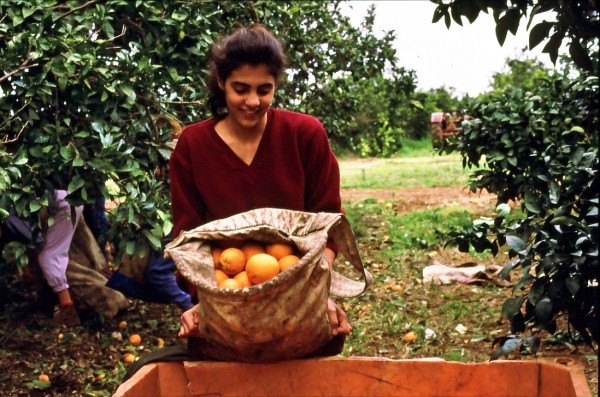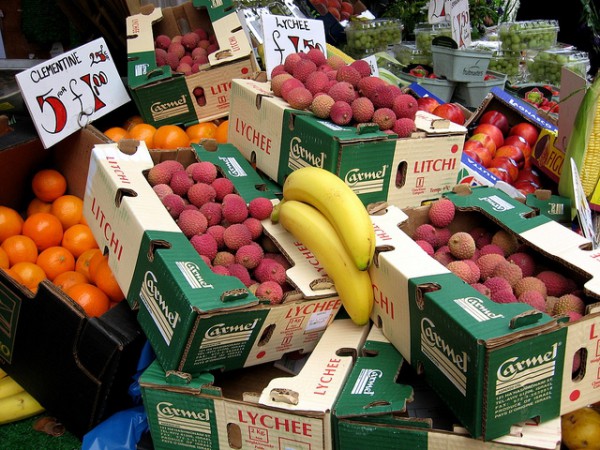“He makes grass grow for the cattle, and plants for people to cultivate—bringing forth food from the earth: wine that gladdens human hearts, oil to make their faces shine, and bread that sustains their hearts. The trees of the Lord are well watered, the cedars of Lebanon that He planted.” (Psalm 104:14–16)
Tonight on the Jewish calendar, a remarkable new year is celebrated: Tu B’Shvat (15 Shvat)—the New Year of Trees.
This holiday, which is also referred to as Israeli or Jewish Arbor Day, is connected to the agricultural cycle.
Here in Israel, it is both an agricultural holiday for Israeli kibbutzim (farming settlements) and a holiday promoting environmental awareness. Because of that, all over Israel there will be tree planting and hike-and-learn events.
Why a New Year for Trees?
“When you enter the land and plant any kind of fruit tree, regard its fruit as forbidden. For three years you are to consider it forbidden; it must not be eaten. In the fourth year all its fruit will be holy, an offering of praise to the Lord. But in the fifth year you may eat its fruit. In this way your harvest will be increased. I am the Lord your God.” (Leviticus 19:23–25)
Although the 15th day of the Jewish month of Shvat is not mentioned in the Torah, Tu B’Shvat does have an origin in Scripture.
Trees have some importance in the Torah, since they are symbols of God’s provision and beneficence.
And newly planted trees had usage restrictions.
Leviticus 19:23–25 states that a tree’s fruit may not be eaten during the first three years after planting, and the fourth year’s fruit is for God.
When this instruction was issued, the fruit of the fourth year was meant for tithing. In keeping this, the people were promised blessing. It also required a certain amount of trust in God’s provision and promises as the fruit of new trees could be eaten in the fifth year of bearing fruit.
Tu B’Shvat, which actually marks the fourth “new year” in the Jewish calendar, helps to calculate that growth.
If we consider the various beginnings of a new year in secular calendars—school year, fiscal year, calendar year, etc.—the idea of four “new years” is not so unusual.
The other three Jewish new years mark the Biblical New Year’s Day (Nisan 1), the tithing of cattle for Temple sacrifices (Elul 1), and the start of the Jewish civil year at Rosh HaShanah (Tishri 1).
Tu B’Shvat serves as the annual marker for distinguishing between old and new crops and identifying the age of the trees of Israel for the purpose of tithing.
According to the Mishnah, during Temple times in Jerusalem, a tree planted the day before Tu B’Shvat begins its second year the day after it is planted, and a tree planted after this holiday has its second year on the following Tu B’Shvat.
On any given Tu B’Shvat, farmers were at the Temple offering the first fruits of the trees they planted when those trees turned four years old. If they could not bring the fruit, they brought the monetary equivalent.
The following Tu B’Shvat, those same farmers could benefit from the produce of those same trees for personal or economic use.
Of course, agricultural tithing involved much more than bringing the fruit of four-year old trees to the Temple on Tu B’Shvat.
This is just one aspect of Biblical tithing.

Harvesting olives in Israel: In years one, two, four and five of Israel’s ancient seven-year agricultural cycle, 10 percent of produce was brought to Jerusalem. In years three and six of the cycle, 10 percent was given to the poor. In the seventh year, the land was allowed to rest.
Celebrating Tu B’Shvat With a Festive Feast
“For the Lord your God is bringing you into a good land—a land with brooks, streams, and deep springs gushing out into the valleys and hills; a land with wheat and barley, vines and fig trees, pomegranates, olive oil and honey.” (Deuteronomy 8:7–8)
Because Tu B’Shvat is a new year, on this day it is customary to eat a special festive meal of dried fruits and nuts such as raisins, carob, and almonds.
This special meal is called a seder, and is similar to the Passover Seder—even having four cups of wine.
Many around the world incorporate into the seder the Seven Species associated with the Land of Israel in Deuteronomy 8:8—wheat, barley, grapes, figs, pomegranates, olives, and dates.
The practice of eating the Seven Species probably developed to maintain a connection with the Holy Land, especially for those outside Israel in the Diaspora.

The blessing for eating fruit and nuts is “Blessed are You, Lord our God, King of the Universe, Who creates the fruit of the tree.”
The seder itself is thought to have started in the 17th century by Kabbalists who suggested the theme of restoring blessing by repairing the Tree of Life, which according to Rabbi Eliezer Shore represents spiritual enlightenment and the eternal life that comes from being in a relationship with God, the source of all being.
The traditional seder ends with a prayer that states, “May all the sparks scattered by our hands, or by the hands of our ancestors, or by the sin of the first human against the fruit of the tree, be returned and included in the majestic might of the Tree of Life.”
Because of this focus on restoring the broken relationship with God, Tu B’Shvat is an excellent time to plant the seeds of God’s Word in the hearts and lives of the Jewish People.
“Even now the one who reaps draws a wage and harvests a crop for eternal life, so that the sower and the reaper may be glad together.” (John 4:37)

“He will raise a banner for the nations and gather the exiles of Israel; He will assemble the scattered people of Judah from the four quarters of the earth.” (Isaiah 11:12)
Celebrating the Miracle of the Greening of the Holy Land
“Instead of the thornbush will grow the juniper, and instead of briers the myrtle will grow. This will be for the LORD’s renown, for an everlasting sign, that will endure forever.” (Isaiah 55:13)
Although most people do not keep Tu B’Shvat as a Kabbalistic holiday, this “minor” holiday has taken on greater weight over time, deepening Jewish ties with the Land of Israel by promoting a mindset of environmental stewardship.
When the Jewish People began returning from exile in the mid-1900s, Israel was a desolate, barren land. Settling the land required developing proper soil deposits and nurturing trees to life, one at a time.
Tu B’Shvat, which is considered a harbinger of spring, became a relevant time to plant saplings. To this day, it still serves as an opportunity for prompting Israeli citizens to participate in this entirely relevant tradition.
Even Jews, and many Christians, living outside of Israel contribute widely to the planting of those trees. Some people plant trees in their own communities outside Israel, as well.
Because of this active participation in the restoration of the Land, over 240 million trees in Israel have been planted since 1901.
With forests disappearing all around the world, Israel is one of only two countries that entered the 21st century with a net gain in the number of trees. (JNF)
This trend is in keeping with Bible prophecy regarding the end-time restoration of Israel. It is also a sign to the world that God keeps His promises to Israel:
“I will put in the desert the cedar and the acacia, the myrtle and the olive. I will set junipers in the wasteland, the fir and the cypress together, so that people may see and know, may consider and understand, that the hand of the Lord has done this, that the Holy One of Israel has created it.” (Isaiah 41:19–20)
Beyond the many forests that Israel has planted, farmers have planted many fruit groves as well. Today, fruit from Israel is shipped around the globe. This too, is in fulfillment of Bible prophecy:
“In days to come Jacob will take root, Israel will bud and blossom and fill all the world with fruit.” (Isaiah 27:6)
Because trees symbolize and preserve life, and are a fulfillment of Bible prophecy, it should come as no surprise that Israel’s forests are sometimes attacked by her enemies.
About 500 forest fires a year are the result of negligence, arson, and even Arab or Palestinian terrorist attacks.
During the 2006 Lebanon War, Katyusha rockets destroyed 10,000 acres of hand-planted forest. Even the life-giving topsoil was burned away and had to be replaced.
In 2010, a deadly forest fire on Mount Carmel in northern Israel, just south of Haifa, claimed 44 lives, many of whom were Israel Prison Service officer cadets who were on the way to Damun Prison to evacuate its prisoners from the path of the flames.
Six million trees in the Carmel forest were destroyed and more than 17,000 people had to be evacuated.
While that fire was accidentally started by a 14-year-old from the Druze village of Isfaya who carelessly threw a coal from his nargila (water pipe), in the days following, several other fires broke out. Investigators concluded that these fires were the work of arsonists.

Israeli children receive help from a soldier as they plant trees on Tu B’Shvat in the western Negev Desert.
While such devastation is from the enemy, one just has to take a look at the modern-day State of Israel to know that God is at work in the Holy Land.
Tu B’Shvat is a time to praise Him for His mighty works, giving thanks for the natural world as well as the many way He provides for our needs.
This holiday marks the redemption of the Land. And although God has moved in the hearts of people to plant trees, He is the author of the amazing miracle of the blossoming of the desert.
But a greater miracle is about to take place in Israel, one in which each of us can participate—the spiritual blossoming of Israel when the Jewish People recognize that Yeshua (Jesus) is the Jewish Messiah:
“And I will pour out on the house of David and the inhabitants of Jerusalem a spirit of grace and supplication. They will look on Me, the one they have pierced, and they will mourn for Him as one mourns for an only child, and grieve bitterly for Him as one grieves for a firstborn son.” (Zechariah 12:10)















